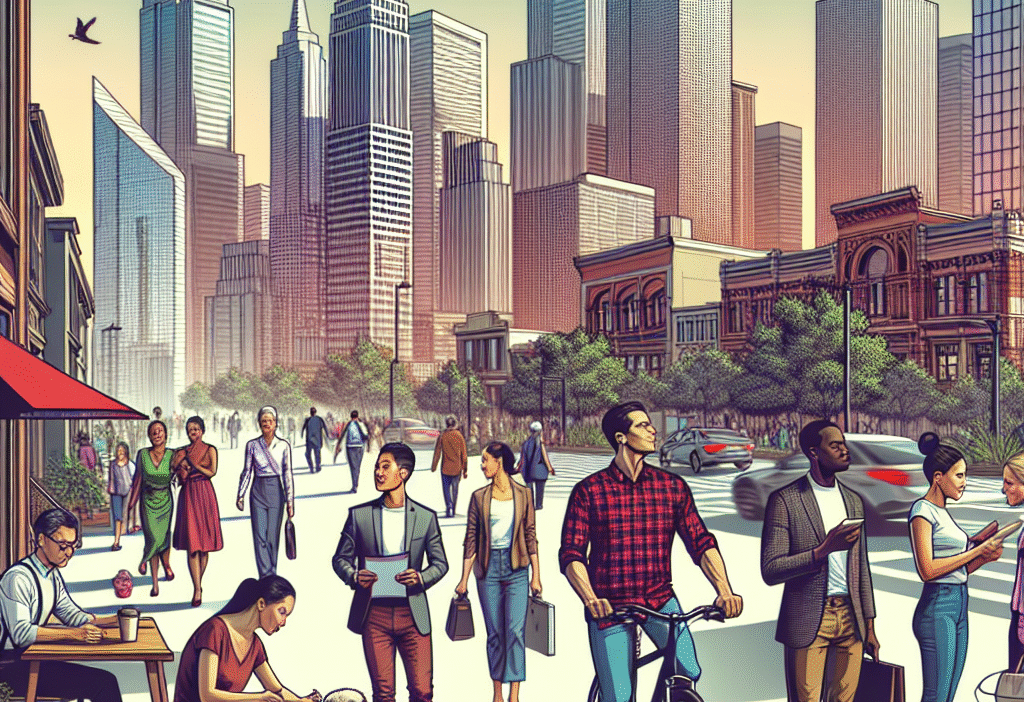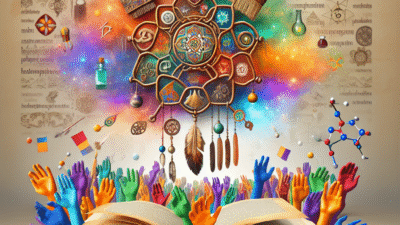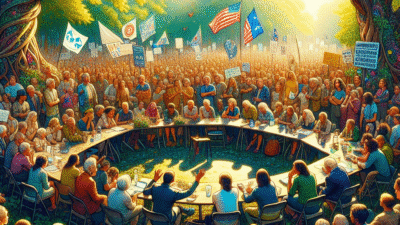Introduction
In the bustling tapestry of city life, one community often goes unnoticed amidst the vibrant chaos: the urban middle class. These resilient individuals are not just passive residents; they are instrumental in shaping our cities, driving both economic growth and social transformation. In this article, we delve into the multifaceted role of the urban middle class, showcasing how they serve as unsung heroes of city development. From their economic contributions to community initiatives and cultural enrichment, we’ll explore the vital ways in which the urban middle class is pivotal in uplifting urban environments.
So, if you’re curious about how these everyday champions influence city dynamics, continue reading! You’ll gain insights that could empower your understanding of urban development and inspire engagement within your community. 💼🌆
Understanding the Urban Middle Class
Defining the Urban Middle Class
At its core, the urban middle class comprises individuals and families who possess moderate income levels, often working in various sectors like education, healthcare, technology, and small businesses. Their socio-economic status allows them to access essential services, engage with the community, and contribute to local economies.
Key Characteristics of the Urban Middle Class
- Education: Generally well-educated, with a significant percentage holding college degrees.
- Employment: Employed in stable jobs that offer decent salaries and benefits.
- Community Involvement: Actively participate in local politics, volunteer efforts, and community organizations.
- Consumer Behavior: Tend to favor local businesses, contributing directly to the economic fabric of their cities.
The Historical Context
Historically, the urban middle class has emerged over centuries of economic transformation. As cities industrialized and economies shifted towards services and technology, this demographic grew, becoming essential in fostering urban vitality. Moving forward, we’ll dissect their contributions to city development more comprehensively.
Economic Contributions
Job Creation and Entrepreneurship
One of the most significant ways the urban middle class contributes to city development is through job creation and entrepreneurship. Small businesses, often led by middle-class entrepreneurs, generate a considerable number of jobs, providing vital employment to the local population.
Statistics:
- According to the Small Business Administration (SBA), small businesses account for 70% of new jobs in the U.S. annually.
- Local Development: Middle-class entrepreneurs often reinvest their earnings back into the community, further ensuring economic growth.
Consumer Spending Power
The urban middle class possesses substantial consumer spending power, which stimulates local economies. Their investments in goods and services sustain businesses, support job availability, and keep local markets thriving.
Infographic: Consumer Spending Breakdown
| Spending Category | Percentage of Urban Middle-Class Budget |
|---|---|
| Housing | 30% |
| Food | 15% |
| Healthcare | 10% |
| Education | 10% |
| Entertainment | 5% |
| Savings | 15% |
| Miscellaneous | 15% |
Source: National Urban Research Institute
Tax Contributions
Urban middle-class citizens also contribute significantly through taxes. These funds are critical for public services including education, infrastructure, and social programs.
- Fact: Middle-class households typically contribute about 45% of total income taxes in large metropolitan areas. The revenue generated fosters urban development projects that benefit the entire community.
Social and Community Engagement
Revitalization Efforts
Urban middle-class individuals often take the lead in neighborhood revitalization projects. They are typically involved in community organizations that advocate for improved public spaces, housing, and local services.
Case Study: Community Garden Initiatives
Many urban middle-class neighborhoods have witnessed the rise of community gardens, transforming vacant lots into lush, productive spaces. These gardens not only supply fresh produce but also foster community interaction and pride.
Education and Advocacy
Education is another vital sphere where the urban middle class makes a significant impact. They actively participate in school boards and community forums, advocating for education reforms and quality teaching.
- Quote: “Education is the most powerful weapon which you can use to change the world.” – Nelson Mandela. The urban middle class embodies this belief by prioritizing education in their communities.
Cultural Enrichment
Cultural institutions, including theaters, museums, and art galleries, often thrive in urban settings thanks to the patronage of the middle class. Their interest in diverse cultural experiences helps promote local artists and enrich the city’s cultural fabric.
Chart: Cultural Contributions by Income Level
| Income Level | Percentage of Support for Local Arts and Culture |
|---|---|
| Low-Income | 20% |
| Middle Class | 50% |
| Upper-Income | 30% |
Source: Cultural Fundraising Report 2021
Urban Sustainability Initiatives
Advocacy for Green Spaces
Urban middle-class citizens are increasingly investing in sustainable urban development. Their advocacy for parks, green roofs, and community gardens fosters environmental sustainability.
- Fact: Studies indicate that urban greening initiatives can reduce city temperatures by up to 5°F, enhancing urban livability.
Public Transportation Support
The middle class often champions the enhancement of public transportation systems, recognizing their importance for commuting, reducing traffic congestion, and improving air quality.
Case Study: Bike Lane Projects
Cities that implement bike lane projects see increased middle-class participation in sustainable transport. This commitment not only reduces carbon footprints but also promotes healthier lifestyles among residents.
Detailing Challenges Faced by the Urban Middle Class
Economic Pressures
While the urban middle class plays a critical role in city development, they also face unique economic challenges. Rising living costs, stagnant wages, and job insecurity can inhibit their ability to contribute fully.
Statistics:
- Housing Affordability Crisis: A report from the Urban Institute indicates that nearly 40% of urban middle-class families spend over 30% of their income on housing.
Gentrification Issues
Gentrification, often driven by wealthier newcomers, can push middle-class families out of their neighborhoods, leading to cultural erosion and loss of community identity.
Infographic: Impact of Gentrification
| Impact | Percentage of Residents Affected |
|---|---|
| Housing Displacement | 25% |
| Cultural Shift | 40% |
| Business Closures | 15% |
Source: Urban Development Journals
Balancing Community and Individual Needs
Finding the right balance between individual aspirations and community needs is a continuous challenge for the urban middle class. They often find themselves torn between personal advancement and collective responsibility.
The Future of Urban Middle Class Contributions
Evolving Roles with Technological Advancements
As we head further into the digital age, the urban middle class is poised to take on even more significant roles in city development. Embracing technology for sustainable practices and engaged governance will become paramount.
Actionable Insight:
- Communities can establish online platforms for collaboration, allowing residents to collaborate on projects that elevate city life.
Increasing Community Resilience
The ongoing challenges of urban living require the middle class to fortify their connections within the community. Building strong networks will be essential for facing adversities such as economic downturns and environmental crises.
Lifelong Learning and Skill Development
Continual education and professional development within the middle class will encourage adaptability in a changing job market. This initiative could enhance both personal well-being and community growth.
Conclusion
The urban middle class serves as a critical backbone for city development. By active participation in economic growth, social engagement, and cultural enrichment, they elevate the urban environment for everyone. As we continue to navigate challenges like economic insecurity and gentrification, it is imperative to recognize and empower this demographic as the unsung heroes of our cities.
Let us take inspiration from their unwavering spirit and engage in community efforts, advocating for sustainable growth and enriched urban living. 🌟
FAQs
1. What defines the urban middle class?
The urban middle class consists of individuals with moderate incomes, often employed in stable jobs, who actively participate in their communities.
2. How does the urban middle class affect economic growth?
They stimulate local economies through small businesses, consumer spending, and tax contributions, ultimately fostering urban development.
3. Why is community involvement important for the urban middle class?
Community engagement provides a platform to influence local policies, improve public services, and foster social connections.
4. What challenges does the urban middle class face?
Challenges include rising living costs, gentrification, and balancing individual and community needs in a rapidly changing urban landscape.
5. How can the urban middle class evolve for the future?
By embracing technology, building resilience, and committing to lifelong learning, the urban middle class can enhance their impact on city development.
Additionally, for further enriching insights on urban development, check out related articles on MyJRF. Your engagement can make a difference in shaping vibrant cities! 🏙️




